Technology
Private equity and venture capital investors are copying our counterparts in the hedge fund world: we&re trying to automate more of our job.
When I was single, I registered for (a lot of) dating websites. When I met my now-wife, I realized that any technology that can find me a spouse is a killer app. Thatwhy 40 million Americans use online dating sites. But, most of use raise capital and source deals the same way people looked for dates 20 years ago: networking at conferences (or bars).
Most of us want one spouse and we&re done, but in business, you want a lot of partners. I&d argue that the same type of technologies that have revolutionized dating can revolutionize our industry.
In liquid markets, most of the calories expended on technology and analytics are focused on trade selection, or &origination.& However, in private markets, there is more room to optimize across all 11 steps of the investing process. Below, I&ll walk through how progressive investors are using technology and analytics throughout all of their operations. To learn more about this space, I suggest joining an online community I co-founded, PEVCTech.
1) Managing the firm
Before you can actually invest, you have to manage your fund. This is harder than it sounds. In the private equity universe, most partners have primary training as deal-makers, not as managers. When I talk with junior personnel at private equity firms, the quality of firm management is a frequent complaint.
I&ve used Asana extensively to manage activities firm-wide. I also use several living Google docs to maintain the minutes and the group agendas for my fixed weekly meetings. I use another live Google doc to maintain my database of companies I&m marketing to other VCs. That Google document provides cut and pasteable text I can share with other investors, based on their stage, focus and appetite.
Other investors use Trello, Basecamp, and Monday for making sure that everyone at the firm knows each others& long-term OKRs and short-term projects. Point Nine Capital uses 15Five for continuous employee feedback.
One aspect of management which merits attention is your own cybersecurity, which should not be left until a crisis to address. Small investment firms often have interns and entrepreneurs in residence passing through, each of which is a security risk. (See A comprehensive guide to security for startups by Bessemer Ventures.)
2) Marketing
Kyle Dunn, CEO of Meyler Capital, says &investors should focus on building a large audience within a CRM system (having the ability to categorize your different constituents); communicate consistently to that audience; and implement an automation platform that can leverage lead score to profile interest. It sounds simple; however, very few asset managers actually do it.& I agree.
Many tools designed for B2B marketing in general are also relevant to investors. I know of funds using Constant Contact, Goodbits, Pardot and Publicate to create light newsletters for internal and external consumption. A major angel group uses Influitive, an advocate management tool, to track, activate and motivate their members. Other VCs use Contently* or Social Native* to create relevant content. Meyler Capital is taking the analytical rigor of modern internet marketing and applying it to fund marketing.
Point Nine Capitalwebsite is now powered by Contentful — it uses Unbounce for landing pagesand Typeform for surveys and other data collection. &We&re using … TinyLetter for our &Content Newsletter& … and Buffer to schedule social media posts. Last but not least, we still use MailChimp to publish our (in)famous newsletter.& I also use Mailchimp for the teten.com and pevctech.com mailing lists. Point Nine Capital uses Mention for media monitoring. Teten.com is built on WordPress as my content management system.
I use Hootsuite to coordinate my social media activity, which consists of Teten.com, PEVCTech.com, Linkedin, AngelList, and (passively) Twitter and Facebook. I use Google Drive to host my conference presentations, which are all embedded at teten.com. I use Diigo, a social bookmarking tool, to keep a record of useful websites. I have also configured IFTTT to share on Twitter anything new I post on Diigo.
Qnary is one of numerous tools which can help build out your team members& virtual presence. A tool like Quuu identifies relevant, shareable content to keep your social media channels active.
&There are two crucial aspects of marketing that investors often overlook: automation and analytics,& wrote Sabena Quan-Hin, Marketing Manager at Flow Capital. &Automation allows you to spend less time on tedious tasks and will help boost productivity, especially within a small marketing team. At Flow Capital, we use HubSpotsequences and workflows functions to automate a bulk of our emails and internal tasks. This provides us more time to develop meaningful relationships with prospects and customers. We use Google Analytics, HubSpot, and LinkedIn Campaign Manager for the majority of our analytics. For our content creation, we use tools such as Canva (graphic design) and GoToStage (webinars platform) to create and share content for prospects to find.&
3) Raising capital
Tim Friedman, Founder, PE Stack, said, &If I could offer one piece of advice to todaymanagers, it would be to take the time to understand the demands of the modern institutional LP. Todayinvestors are allocating more to alternatives in an environment where there are record numbers of new funds; and seeking deeper relationships with managers via direct and coinvestments. The past few years have therefore seen a huge rise in the proportion of LPs using specialized tools to manage and understand their portfolios, including platforms such as Chronograph, Solovis, Allocator, Cobalt LP, eFront Insights, iLevel, Burgiss.
The proportion of LPs using technology to manage their portfolios will continue to increase, and GPs unable to provide quality data to LPs will find it increasingly hard to retain and attract LPs. We are also seeing technology evaluation as an increasingly important part of LP operational due diligence. Excel and Google simply aren&t going to cut it if you expect to build a high quality institutional investor base.&
A more efficient approach to fundraising than haphazard networking is to mine the data exhaust from the limited partner universe to identify those LPs most likely to find your fund attractive and focus all your energy on them. I previously posted a detailed presentation with sales technology tools useful for B2B sales.
I always make a point of keeping firm records updated in the major data-trackers tracking the VC industry: AngelList, CB Insights, Crunchbase, Dow Jones VentureSource, Pitchbook, Preqin, and Refinitiv Eikon. LPs, coinvestors, and press use these tools, so I work for free for these data vendors to make sure that their data about our activities is correct. This is a great example of why data businesses have substantial moats.
Boardex and Relationship Science make it easier to understand and map social networks into potential limited partners. Cobalt for General Partners helps GPs to optimize their fundraising strategy. MandateWire and FinSearches provide leads on limited partners with new mandates which might fit your fund. Evestment is a platform for capital-raisers; Evestment TopQ automates private markets performance calculation.
I am a heavy user of DocSend, a secure content sharing and tracking platform that can be used to seamlessly share recurring materials with potential LPs. It provides analytics to track shared materials across target senders and improve the content for future leads. Point Nine Capital uses Qwilr to create modern, mobile-native collateral.
Most funds open data rooms to share previous reports, performance data, pitch decks, legal docs and other fundraising material with LPs. I&ve seen funds using Ansarada, Allvue, Box, CapLinked, dfsco, Dropbox, Digify, Drooms, Google Drive, iDeals, Intralinks, Ipreo, Merrill Corporation, and SecureDocs for their Virtual Data Rooms. These same tools are used by companies raising capital.
I&ve also experimented with using services which are marketplaces between LPs and GPs: CEPRES, DiligenceVault, FundVeil, Harvest Exchange, and Palico. Some funds are using technology-enabled intermediaries to help them sell to retail LPs, e.g., Artivest and iCapital Network.
Deer Isle Group has built the D.I.G. Beacon technology system, which automatically outbound-solicits a universe of over 10,000 institutional investors, without requiring LPs to register for an online network of funds.
Crystal guides you in how to influence a particular person, based on their online presence. X.ai is a virtual assistant which can coordinate your fundraising and other meetings.
- Details
- Category: Technology
Figuring out just what an AI is good at is one of the hardest thing about understanding them. To help determine this, OpenAI has designed a set of games that can help researchers tell whether their machine learning agent is actually learning basic skills or, what is equally likely, has figured out how to rig the system in its favor.
Itone of those aspects of AI research that never fails to delight: the ways an agent will bend or break the rules in its endeavors to appear good at whatever the researchers are asking it to do. Cheating may be thinking outside the box, but it isn&t always welcome, and one way to check is to change the rules a bit and see if the system breaks down.
What the agent actually learned can be determined by seeing if those &skills& can be applied when itput into new circumstances where only some of its knowledge is relevant.
For instance, say you want to learn if an AI has learned to play a Mario-like game where it travels right and jumps over obstacles. You could switch things around so it has to walk left; you could change the order of the obstacles; or you could change the game entirely and have monsters appear that the AI has to shoot while it travels right instead.
If the agent has really learned something about playing a game like this, it should be able to pick up the modified versions of the game much quicker than something entirely new. This is called &generalizing& — applying existing knowledge to a new set of circumstances — and humans do it constantly.
OpenAI researchers have encountered this many times in their research, and in order to test generalizable AI knowledge at a basic level, they&ve designed a sort of AI arcade where an agent has to prove its mettle in a variety of games with varying overlap of gameplay concepts.

The 16 game environments they designed are similar to games we know and love, like Pac-Man, Super Mario Bros., Asteroids, and so on. The difference is the environments have been build from the ground up towards AI play, with simplified controls, rewards, and graphics.
Each taxes an AIabilities in a different way. For instance in one game there may be no penalty for sitting still and observing the game environment for a few seconds, while in others it may place the agent in danger. In some the AI must explore the environment, in others it may be focused on a single big boss spaceship. But they&re all made to be unmistakably different games, not unlike (though obviously a bit different from) what you might find available for an Atari or NES console.
Herethe full list, as seen in the gif below from top to bottom, left to right:

- Ninja: Climb a tower while avoiding bombs or destroying them with throwing stars.
- Coinrun: Get the coin at the right side of the level while avoiding traps and monsters.
- Plunder: Fire cannonballs from the bottom of the screen to hit enemy ships and avoid friendlies.
- Caveflyer: Navigate caves using Asteroids-style controls, shooting enemies and avoiding obstacles.
- Jumper: Open-world platformer with a double-jumping rabbit and compass pointing towards the goal.
- Miner: Dig through dirt to get diamonds and boulders that obey Atari-era gravity rules.
- Maze: Navigate randomly generated mazes of various sizes.
- Bigfish: Eat smaller fish than you to become the bigger fish, while avoiding a similar fate.
- Chaser: Like Pac-Man, eat the dots and use power pellets strategically to eat enemies.
- Starpilot: Gradius-like shmup focused on dodging and quick elimination of enemy ships.
- Bossfight: 1 on 1 battle with a boss ship with randomly selected attacks and replenishing shields.
- Heist: Navigate a maze with colored locks and corresponding keys.
- Fruitbot: Ascend through levels while collecting fruit and avoiding non-fruit.
- Dodgeball: Move around a room without touching walls, hitting others with balls and avoiding getting hit.
- Climber: Climb a series of platforms collecting stars along the way and avoiding monsters.
- Leaper: Frogger-type lane-crossing game with cars, logs, etc.
You can imagine that an AI might be created that excels at the grid-based ones like Heist, Maze, and Chaser, but loses the track in Jumper, Coinrun, and Bossfight. Just like a human — because there are different skills involved in each. But there are shared ones as well: understanding that the player character and moving objects may have consequences, or that certain areas of the play area are inaccessible. An AI that can generalize and adapt quickly will learn to dominate all these games in a shorter time than one that doesn&t generalize well.
The set of games and methods for observing and rating agent performance in them is called the ProcGen benchmark, since the environments and enemy placements in the games are procedurally generated. You can read more about them, or learn to build your own little AI arcade, at the projectGitHub page.
- Details
- Category: Technology
Read more: This 16-game arcade for AIs tests their playing prowess
Write comment (97 Comments)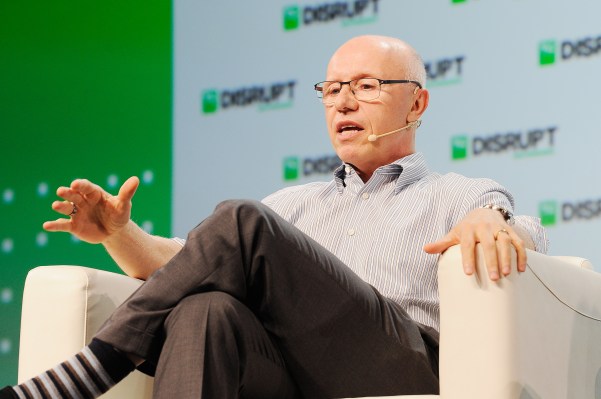
Noted Silicon Valley venture capital fund Sequoia Capital has raised nearly $1 billion for later-stage U.S. investments and roughly $2.4 billion for venture and growth deals in China, according to paperwork filed with the U.S. Securities and Exchange Commission on Tuesday.
The firm, famous for its investments in U.S. companies like Google, Instagram, Dropbox, LinkedIn, Snap and WhatsApp, is also an investor in some of Chinamost successful startups.
These are companies like Alibaba, Chinae-commerce answer to Amazon; Ant Financial, a multibillion-dollar financial services powerhouse; JD.com, another e-commerce powerhouse; ByteDance, the owner of Americalatest social media sensation, TikTok; and Yitu, one of the national leaders in the development of machine learning applications.
These investments have not come without their share of controversy abroad. Yitu has been linked to the technology dragnet currently in place in Xinjiang, where an estimated 1 million religious and ethnic minorities are currently interned. Meanwhile, TikTokpopularity in the U.S. has come with accusations of censorship in its treatment of posts that were supportive of both Xinjiangimprisoned population and the dissidents protesting mainland Chinaincreasing control over Hong Kong politics.
U.S. senators have already called for an investigation into TikTok, and Yitu was blacklisted by the U.S. Department of Commerce in October for its role in human rights violations in Xinjiang.
Setting politics aside, Sequoia has brought in $1.8 billion for its Sequoia Capital China Growth Fund V and about $550 million for Sequoia Capital China Venture Fund VII, per filings with the Securities and Exchange Commission.
Ita sign that when valuations are concerned (ByteDance alone is now worth $78 billion, according to some reports), investors can overlook the potential political pitfalls of dealing with China.
Sequoia, led by Doug Leone, Michael Moritz, Roelof Botha and others, recently sought $8 billion for a global fund, its largest-ever fundraise, holding a first close of $6 billion in June 2018. In addition, the firm operates Sequoia Capital India, with offices in Menlo Park, Bengaluru, Mumbai, New Delhi, Singapore, Tel Aviv, Beijing, Hong Kong and Shanghai.
News of the fund comes at the tail end of another strong year for venture capital fundraising in the U.S. Firms, including 41-year-old NEA, filed to raise as much as $3.6 billion for a single fund. Meanwhile, Norwest Venture Partners, DCVC and Accel all closed new vehicles exceeding $500 million.
- Details
- Category: Technology
Read more: Setting politics aside, Sequoia raises $3.4 billion for US and China investments
Write comment (92 Comments)
Fronted, a new London-based startup aiming to make life easier for renters, is breaking cover today.
The company, founded by Jamie Campbell, Simon Vans-Colina and Anthony Mann — former employees at Bud, Monzo and Apple, respectively — will launch early next year with a fintech product to help renters finance their rental deposits.
The plan is get accepted into the FCA &sandbox& program (run by the U.K. financial services regulator) to begin lending cash that can only be used for a rental deposit.
The thinking is that by using Open Banking and other financial technology and offering a credit product designed to finance deposits directly, Fronted can lend more cheaply than existing options, such as credit cards, pay-day lenders and overdrafts, or insurance-backed membership schemes, and at lower risk.
&Renting sucks — anyone who rents knows it,& Fronted CEO Jamie Campbell tells me. &There are so many problems to solve and we intend to tackle them all bit by bit. But first, we are going to pay peoplerent deposits for them so they can pay us back in bite-size manageable amounts. Deposits are a large upfront expense and most people either use mum and dad to sort it out or stay where they are (in the worst cases they do to pay-day lenders).&
In a call late last week with Campbell and CTO Vans-Colina, the pair explained that renters that apply to use the Fronted service will be asked to link their bank using Open Banking, therefore sharing their recent transaction data, and provide details of the property they wish to rent. Then, once Fronted has run the required checks and agreed to provide credit, the startup sends the money directly to the estate agent to be placed in the U.K.Deposit Protection Scheme, meaning that the loan never touches the renterhands (or wallet).
&Customers will have a direct debit to pay us back over a set schedule, or they can pay it all off when they have the money to do so, [and] we don&t charge any fees,& says Campbell. There is also a planned &holiday mode& that will allow customers to temporarily reduce their monthly payments in order to help avoid falling into financial difficulty.
&Ultimately this first product is designed to be very convenient and we believe people will opt for this more manageable alternative to a normal deposit,& adds Campbell. &There are customers of ours that will be in ‘hidden households& unable to move because of the upfront fees… Deposits can [also] sometimes take a long time to be returned from the schemes (something the government recently launched an enquiry into). Fronted wants to serve people who might otherwise be ‘double-exposed& by deposits. We hope this first product increases social mobility by providing liquidity when people need it.&
Initially, Fronted will generate revenue through interest charged. It then plans to extend its fintech product offering with additional money-advance services &to help smooth out the bumps of renting.&
&We also intend on rolling out a ‘turn up and turn on& service for utilities and internet,& says the Fronted CEO.
- Details
- Category: Technology
Instagram dodges child safety laws. By not asking users their age upon signup, it can feign ignorance about how old they are. That way, it can&t be held liable for $40,000 per violation of the Child Online Privacy Protection Act. The law bans online services from collecting personally identifiable information about kids under 13 without parental consent. Yet Instagram is surely stockpiling that sensitive info about underage users, shrouded by the excuse that it doesn&t know whowho.
But here, ignorance isn&t bliss. Itdangerous. User growth at all costs is no longer acceptable.
Ittime for Instagram to step up and assume responsibility for protecting children, even if that means excluding them. Instagram needs to ask users& age at sign up, work to verify they volunteer their accurate birthdate by all practical means, and enforce COPPA by removing users it knows are under 13. If it wants to allow tweens on its app, it needs to build a safe, dedicated experience where the app doesn&t suck in COPPA-restricted personal info.

Minimum Viable Responsibility
Instagram is woefully behind its peers. Both Snapchat and TikTok require you to enter your age as soon as you start the sign up process. This should really be the minimum regulatory standard, and lawmakers should close the loophole allowing services to skirt compliance by not asking. If users register for an account, they should be required to enter an age of 13 or older.
Instagramparent company Facebook has been asking for birthdate during account registration since its earliest days. Sure, it adds one extra step to sign up, and impedes its growth numbers by discouraging kids to get hooked early on the social network. But it also benefits Facebookbusiness by letting it accurately age-target ads.

Most importantly, at least Facebook is making a baseline effort to keep out underage users. Of course, as kids do when they want something, some are going to lie about their age and say they&re old enough. Ideally, Facebook would go further and try to verify the accuracy of a userage using other available data, and Instagram should too.
Both Facebook and Instagram currently have moderators lock the accounts of any users they stumble across that they suspect are under 13. Users must upload government-issued proof of age to regain control. That policy only went into effect last year after UKChannel 4 reported a Facebook moderator was told to ignore seemingly underage users unless they explicitly declared they were too young or were reported for being under 13. An extreme approach would be to require this for all signups, though that might be expensive, slow, significantly hurt signup rates, and annoy of-age users.

Instagram is currently on the other end of the spectrum. Doing nothing around age-gating seems recklessly negligent. When asked for comment about how why it doesn&t ask users& ages, how it stops underage users from joining, and if itin violation of COPPA, Instagram declined to comment. The fact that Instagram claims to not know users& ages seems to be in direct contradiction to it offering marketers custom ad targeting by age such as reaching just those that are 13.
Instagram Prototypes Age Checks
Luckily, this could all change soon.
Mobile researcher and frequent TechCrunch tipster Jane Manchun Wong has spotted Instagram code inside its Android app that shows itprototyping an age-gating feature that rejects users under 13. Italso tinkering with requiring your Instagram and Facebook birthdates to match. Instagram gave me a &no comment& when I asked about if these features would officially roll out to everyone.

Code in the app explains that &Providing your birthday helps us make sure you get the right Instagram experience. Only you will be able to see your birthday.& Beyond just deciding who to let in, Instagram could use this info to make sure users under 18 aren&t messaging with adult strangers, that users under 21 aren&t seeing ads for alcohol brands, and that potentially explicit content isn&t shown to minors.
Instagraminability to do any of this clashes with it and Facebookbig talk this year about its commitment to safety. Instagram has worked to improve its approach to bullying, drug sales, self-harm, and election interference, yet therebeen not a word about age gating.

Meanwhile, underage users promote themselves on pages for hashtags like #12YearOld where iteasy to find users who declare they&re that age right in their profile bio. It took me about 5 minutes to find creepy &You&re cute& comments from older men on seemingly underage girls& photos. Clearly Instagram hasn&t been trying very hard to stop them from playing with the app.
Illegal Growth
I brought up the same unsettling situations on Musically, now known as TikTok, to its CEO Alex Zhu on stage at TechCrunch Disrupt in 2016. I grilled Zhu about letting 10-year-olds flaunt their bodies on his app. He tried to claim parents run all of these kids& accounts, and got frustrated as we dug deeper into Musicallyfailures here.
Thankfully, TikTok was eventually fined $5.7 million this year for violating COPPA and forced to change its ways. As part of its response, TikTok started showing an age gate to both new and existing users, removed all videos of users under 13, and restricted those users to a special TikTok Kids experience where they can&t post videos, comment, or provide any COPPA-restricted personal info.
If even a Chinese app social media app that Facebook CEO has warned threatens free speech with censorship is doing a better job protecting kids than Instagram, somethinggotta give. Instagram could follow suit, building a special section of its apps just for kids where they&re quarantined from conversing with older users that might prey on them.
Perhaps Facebook and Instagramhands-off approach stems from the fact that CEO Mark Zuckerberg doesn&t think the ban on under-13-year-olds should exist. Back in 2011, he said &That will be a fight we take on at some point . . . My philosophy is that for education you need to start at a really, really young age.& Heput that into practice with Messenger Kids which lets 6 to 12-year-olds chat with their friends if parents approve.
The Facebook family of apps& ad-driven business model and earnings depend on constant user growth that could be inhibited by stringent age gating. It surely doesn&t want to admit to parents itlet kids slide into Instagram, that advertisers were paying to reach children too young to buy anything, and to Wall Street that it might not have 2.8 billion legal users across its apps as it claims.

But given Facebook and Instagramprivacy scandals, addictive qualities, and impact on democracy, it seems like proper age-gating should be a priority as well as the subject of more regulatory scrutiny and public concern. Society has woken up to the harms of social media, yet Instagram erects no guards to keep kids from experiencing those ills for themselves. Until it makes an honest effort to stop kids from joining, the rest of Instagramsafety initiatives ring hollow.
- Details
- Category: Technology
Read more: Instagram still doesn’t age-check kids. That must change.
Write comment (97 Comments)2019 offered a blistering catalog of books to peruse, on top of the prodigious publishing schedules of the past few years (if you think we are at Peak TV, you might want to check out your local bookstore for a counterpoint).
We already checked in with Extra Crunch readers and did a sort of readerchoice selection of their twelve favorites, but I also asked our TechCrunch editorial staff about what they read this year and would recommend. Perhaps unsurprisingly, they came back with a mix of books (and audiobooks!) on tech, startups, biographies, graphic novels, and true crime fiction like the proper nerds we all are over here.
The criteria was that the book had to be read in 2019, but didn&t necessarily have to be published this calendar year. In part, thatbecause books that may not have been all that interesting in the past suddenly got their turn in the spotlight for whatever reasons (headlines, viral influencer recommendations on Goop, or what have you).
In short, here are eleven writers at TechCrunch and the thirteen books that made the largest impact on them, any one of which would make a great gift for that techno-geek friend of yours.
Zack Whittaker
Sandworm: A New Era Of Cyberwar And The Hunt For The KremlinMost Dangerous Hackers by Andy Greenberg
Doubleday / 368 pages / November 2019
PublisherLink
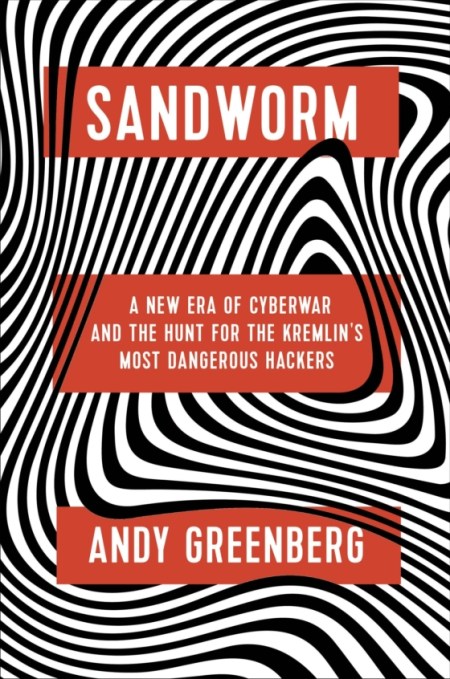
Zack has long covered the daily breaches, cybersecurity hacks, and other data leaks that plague our world today (just last month: hacks at Macyand Magic: the Gathering). So perhaps unsurprisingly, his favorite book of the year was about none other than Russian hackers:
Andy Greenberglatest book on Sandworm, the group of Russian hackers blamed for the most disruptive cyberattack in history, is a real page-turner. GreenbergSandworm is a gripping tale of the groupdiscovery and their attacks, from shutting off the electric grids in Eastern Europe to the spread of the NotPetya ransomware attack, which froze hospitals, railways, and ATMs. Although written for the layperson, itdetailed enough to satisfy any expert, and the use of first person draws in the reader to the storynarrative. This incredibly detailed detective-style book — leaving no stone unturned — and the refreshing addition of footnotes — is a must-read for anyone interested cybersecurity.
Andy Greenberg himself has long covered security and hacking, and is currently a senior writer at Wired. This is his second book, following publication of This Machine Kills Secrets in 2012 about Julian Assange.
Sarah Perez
The Baddest Bitch in the Room by Sophia Chang
Audible Original by Hello Sunshine / 8 hours / September 2019
PublisherLink

Sarah has long taken a deep view into the world of mobile and apps (among a huge host of other topics), but her favorite audiobook this year comes from a behind-the-scenes player in the music industry who carefully puts herself out into the spotlight:
You don&t have to be a huge hip-hop fan to love Sophia Changnew memoir, but her Audible Original does include some impressive name-dropping. A music industry veteran, Chang managed rap and R-B stars like the Wu-Tang ClanRZA, GZA, and ODB, as well as A Tribe Called Quest, Raphael Saadiq and D&Angelo.
But her story is more than a music industry retrospective. Chang is also the fiercely independent child of Korean immigrants who left Vancouver for New York, as well as a woman who fell in love with a Shaolin monk, learned kung fu, shaved her head to shred stereotypes of Asian women, and became a mother, all while working her way up in her career.
In her self-narrated memoir (which includes some 24 guest appearances!), she steps into the limelight after a life spent behind the scenes helping talented artists tell their stories. Shesmart, funny, and inspirational — and someone, as her story shows, who has really earned the title &baddest bitch.&
Walter Thompson
Testosterone: An Unauthorized Biography by Rebecca M. Jordan-Young and Katrina Karkazis
Harvard University Press / 288 pages / October 2019
PublisherLink
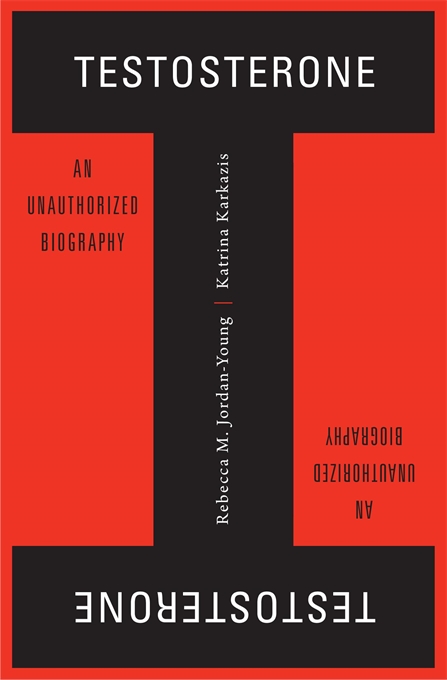
Heading in the other direction a bit, our new senior editor at Extra Crunch Walter Thompson recommends a &biography& of a well-known but surprisingly misunderstood steroid that is getting its own time in the limelight:
Written by a sociomedical scientist and a cultural anthropologist, the book explodes many of the common myths surrounding the hormone erroneously associated with male virility and masculinity. Jordan-Young and Karkazis delve into science and history to explain how testosterone has been generally misrepresented by popular culture and the medical industry by exploring how &T& impacts aggression, reproduction, power, parenting, sports and risk-taking.
Given the increasing attention to these issues, the bookauspicious timing and deeply researched foundations are already having a huge effect on an important cultural conversation today.
Josh Constine
SAGA: Compendium One by writer Brian K Vaughan and artist Fiona Staples
Image Comics / 1,328 pages / August 2019
PublisherLink

One of Joshbook recommendations for 2019 is a graphic novel that is expansive in scope (as one would hope for a paperback that runs for more than a 1,000 pages):
Possibly the greatest non-superhero action graphic novel, this is a tale of star-crossed lovers from different planets trying to raise their child amidst an intergalactic war. The imaginative inventions, gorgeously colorful artwork, and mix of laser fights and suspenseful drama will transport you. The paperback is a great way to entertain yourself without staring at a screen (though itavailable on Comixologyapp too).
AI Superpowers: China, Silicon Valley, and the New World Order by Kai-Fu Lee
Houghton Mifflin Harcourt / 272 pages / September 2018
PublisherLink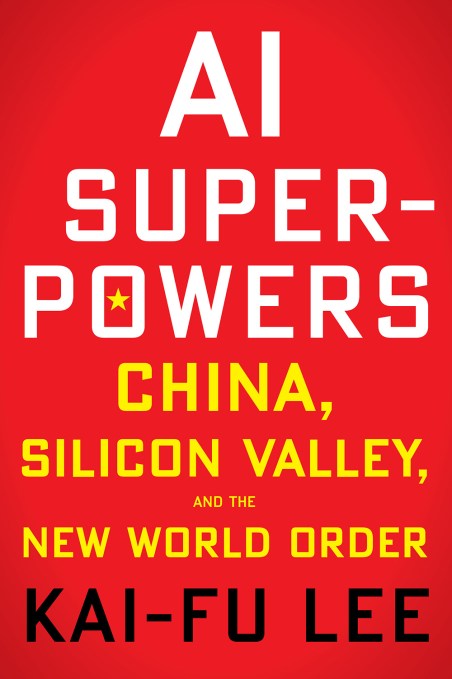
Josh has been a prolific reporter and critic of social network and media companies like Facebook and Twitter. These days, though, there is a new social network that is garnering outsized attention: Tik Tok. Josh has been covering the company and its predecessor Musical.ly for years, and has also been writing about how Facebook should confront this new competitive threat. So perhaps itno surprise that Joshfirst recommendation is for a book that addresses precisely the rise of Chinese-owned apps and the fight for the future of artificial intelligence:
If you want to understand how artificial intelligence is going to impact employment and geopolitics, this is a must read from the former head of Google China. It recounts wild stories of tech startup competition and the rise of the ecosystem in the country, and explores why every country but the US and China have hard times ahead.
AI Superpowers was also the most recommended book by Extra Crunch readers in our survey, and also a book I can personally endorse as well (thanks Josh for stealing my recommendation).
Danny Crichton (i.e. yours truly)
Imperial Twilight: The Opium War and the End of ChinaLast Golden Age by Stephen R. Platt
Knopf / 592 pages / May 2018
PublisherLink
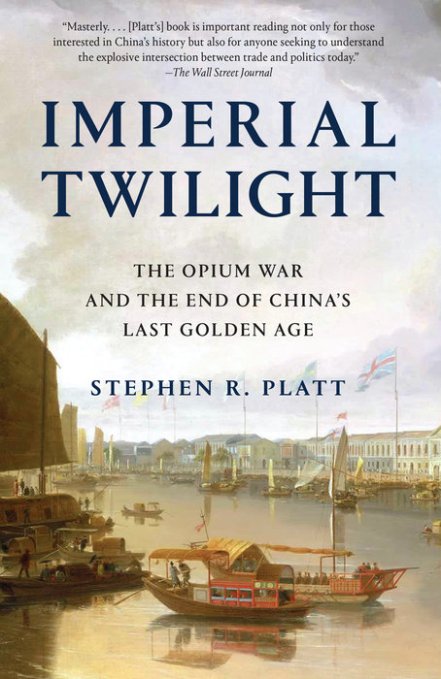
Speaking of China, the trade war continues unabated between the U.S. and the Middle Kingdom. Whereas AI Superpowers focuses on the present and future, Stephen PlattImperial Twilight rewinds us back in time to the era of the Opium War, when Western forces led by a fascinating cast of characters from Britain, the U.S., and elsewhere used trade as a tool to force open Chinaborders, popularize a heavily addictive drug among its people, and engorged on capital flows out of the country in a raw moment of pure political power against an incredibly weakened Qing dynasty.
The book is one of those works that every publisher wants to have in their catalog, complete with an extraordinarily well-written narrative, a deeply textured and nuanced look at a key historical event, and a perfectly timed publication date pegged to one of the most topical news stories of the year. In short, ita smash hit.
Catherine Shu
Continuing this China theme a bit, Catherine has covered tech developments in Asia for years (actually, seven with us as of yesterday) from her perch in Taiwan. But she also has interests outside of the latest new startups, and that includes true crime fiction.
I&ve been a fan of true crime since I was a teenager, but over the last year, I have become uneasy about my attachment to the genre. To be blunt, a lot of books and podcasts are fueled by voyeurism, and I am not comfortable with being culpable in the transformation of tragedy into entertainment. So I welcome new books that take a step back and examine famous cases within their cultural context.
The Five: The Untold Lives of the Women Killed by Jack the Ripper by Hallie Rubenhold
Doubleday / 432 pages / February 2019
PublisherLink

Catherinefirst recommendation flips the lens on one of the most well-known serial murderers in history:
&The Five& by Hallie Rubenhold is probably the first book to comprehensively document the lives of Jack the Rippervictims. Rubenholdresearch uncovered myths about the women, including that not all were prostitutes, a misconception that started with contemporary police and press reports (and may ultimately have hindered the investigation), but continues to be perpetuated by the industry that has grown around the murders.
Rubenhold did an enormous amount of research, but ultimately the bookimpact comes from the very simple but powerful act of restoring these five womenhumanity — an admirable feat considering that their violent murders have been commodified and romanticized for over a century.
The Trial of Lizzie Borden by Cara Robertson
Simon - Schuster / 400 pages / March 2019
PublisherLink

Meanwhile, her second recommendation takes a more expansive view of a famous axe murder case than has traditionally been the norm in the real crime genre:
&The Trial of Lizzie Borden& by Cara Robertson is one of the best books about the case I&ve read (and I&ve read a lot). In addition to providing an exhaustive but extremely compelling account of the legal proceedings that concluded in Lizzie Bordenacquittal, Robertson, a lawyer, also analyzes the case as an example of contemporary attitudes toward gender, class, and criminality.
Her examination of newspaper accounts reveals how the case almost immediately became a media sensation and also that many of the trialspectators were dismissed as &a crowd of morbid females& by one reporter — a misogynistic label that continues to be attached to true crime fans, many of whom are women.
Devin Coldewey
Digital Apollo: Human and Machine in Spaceflight by David A. Mindell
MIT Press / 376 pages / April 2008
PublisherLink
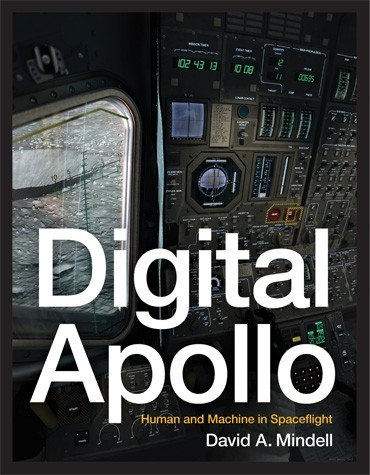
Devin has had long-standing interests in space, artificial intelligence, high-performance computing, and other hard science and tech subjects. His recommendation this year is a classic of the genre written by David Mindell, a long-time MIT professor of engineering history who also is founder of the startup Humatics, which has raised some serious venture capital dollars to make location detection inside of buildings (think robots in factories) a reality. On Digital Apollo, Devin says:
The 50th anniversary of Apollo 11 is a great opportunity to learn about one of the programmost fascinating aspects: the computers that ran it. But Digital Apollo is far more than some survey of early computing hardware. Mindell documents the fascinating people and processes behind the creation of this unprecedented system. Stubborn astronauts, idealistic engineers, and skeptical officials face off while the hard deadline looms, making this an interesting and inclusive story as well as a highly informed history.
Not only is it a great story, itone that will be recognizable to any engineer that has ever had to ship product while dealing with other humans.
Kirsten Korosec
Traffic: Why We Drive the Way We Do (and What It Says About Us) by Tom Vanderbilt
Knopf / 416 pages / July 2008
PublisherLink
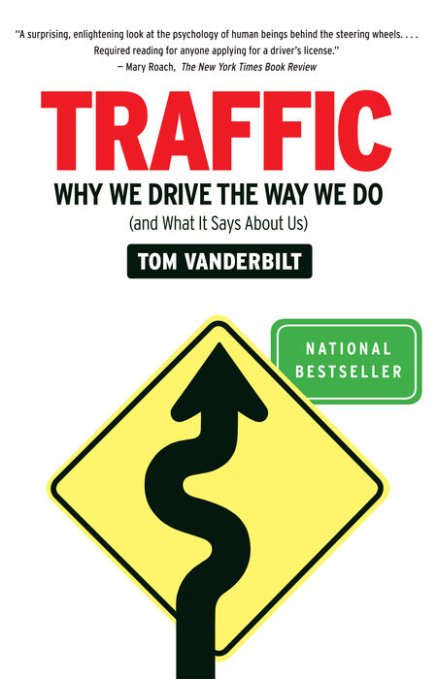
Kirsten has vigorously reported on the transportation sector (you should sign up for her weekly transportation newsletter The Station), including the rise of companies like Tesla and whole new categories of startups like self-driving cars and scooters. Yet despite all the futurism in the industry, she wanted to take a step back in her recommendation to a book that discusses some of the first principles that ‘drive& mobility in the first place:
This book is a decade old and yet itmore relevant than ever before as our cities become more dense and we look for ways out of the congestion. If you want to understand opportunities and challenges for automakers, cities, and even startups around mobility, start here.
With Traffic, Vanderbiltgoal is to show that humans have cognitive limits, and those limits have a direct effect on our traffic systems and the designs of our mobility products. As we increasingly enter a world of human/AI hybrid cars and people speeding rapidly down Market Street on rickety scooters, his book offers us a panorama view of just how hard it it to get mobility right and make it safe.
Matt Burns
Billy, Alfred, and General Motors: The Story of Two Unique Men, a Legendary Company, and a Remarkable Time in American History by William Pelfrey
AMACOM / 336 pages / March 2006
PublisherLink

Among our longest tenured editors, Matt Burns has been writing about automotive topics among others for more than a decade here. He brings us a book about one of the most storied companies (positively and negatively) in American history:
This is the story of General Motors and how a successful carriage maker purchased the Buick name and turned it into the largest automaker in history.
And then how Billy Durant ran the company into the ground and lost control.
So what did Billy Durant do? He founded another company, Chevrolet, the only car to ever be manufactured in New York City, and used wild stock manipulation to regain control of General Motors. And then he lost control again and ended up managing a bowling alley in Flint, MI until he died nearly broke.
Meanwhile, thereAlfred Sloan, a methodical manager of an auto supply company who took over General Motors, devised the yearly model update and eventually wrote the book on managing corporations.
The story of Billy Durant founding General Motors resonates today. Itthe story of a wild entrepreneur whovision and command of the stock market led to the creation of a mega corporation but who lacked the management skills to scale. The book details his incredible rise and fall through vivid stories and first-hand accounts found in Durantunpublished autobiography.
Darrell Etherington
Super Pumped: The Battle for Uber by Mike Isaac
W. W. Norton - Company / 408 pages / September 2019
PublisherLink

Darrell has chronicled the tech industry for many years (picking up a theme here?) and has picked a chronicle of a tech industry luminary which has since lost much of its luster:
This account mostly focuses on Uber founder Travis Kalanick, from his pre-Uber entrepreneurial formative years, right through the corporate power struggle that led to his ousting in 2017.
What I especially enjoyed about it was its depiction of Bill Gurley & an interesting counter-positioning of this Silicon Valley legend with Kalanickfoil that may or may not match your understanding of the real story, depending on who you hear it from.
If you had to pick the &startup profile book of the year award,& Super Pumped would almost certainly take the crown this year. The book was also recommended pretty heavily by Extra Crunch readers in our survey as well, although it didn&t quite make the cut.
Manish Singh
Big Billion Startup & The Untold Flipkart Story by Mihir Dalal
Pan Macmillan India / 320 pages / October 2019
PublisherLink
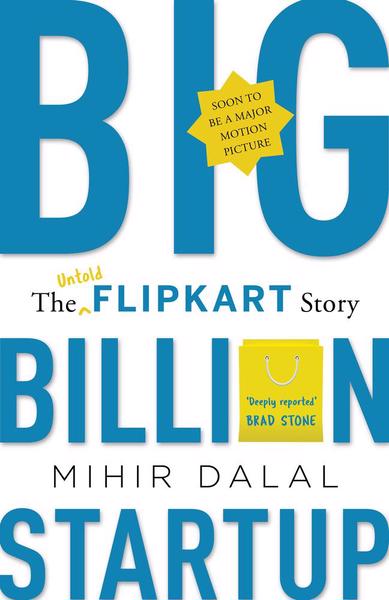
Manish joined us relatively recently to expand our tech coverage more heavily in India, where the startup and entrepreneurial ecosystem has been exploding crazy fast the past decade plus. Perhaps no startup better represents the potential for India than ecommerce giant Flipkart, which is the focus of Manishrecommendation:
&Big Billion Startup & The Untold Flipkart Story,& by journalist Mihir Dalal, is a fascinating look at the making of Indialargest ecommerce platform. Flipkart, which sold a majority stake to Walmart last year for a sweet $16 billion, was founded in 2007, six years before Amazon started its online shopping business in India.
The book, released in October, not only documents the struggle, pain, and setbacks two former Amazon employees went through to build the business from a crummy apartment in Bangalore, but it also reminds us of how different Indiastartup ecosystem was then.
As we wrote last month, Indiatech startups have already raised a record $11.3 billion this year. But in the early days, there were very few VCs who believed in India and even a $50 million check to a startup was unheard of. Flipkart was the trailblazer that paved the way for others to build great startups.
- Details
- Category: Technology
Read more: Gift Guide: TechCrunch writers recommend their favorite reads from 2019
Write comment (96 Comments)Page 195 of 5614

 16
16